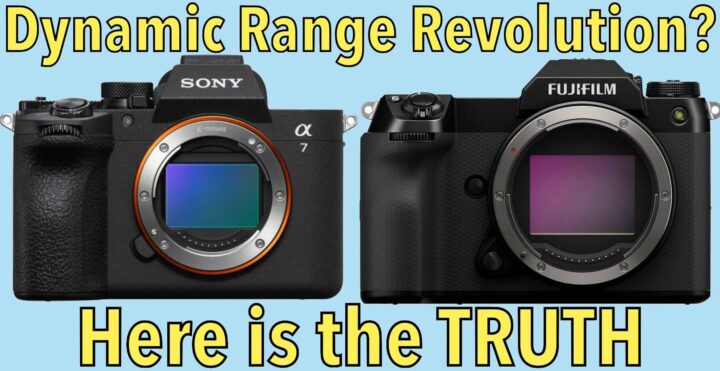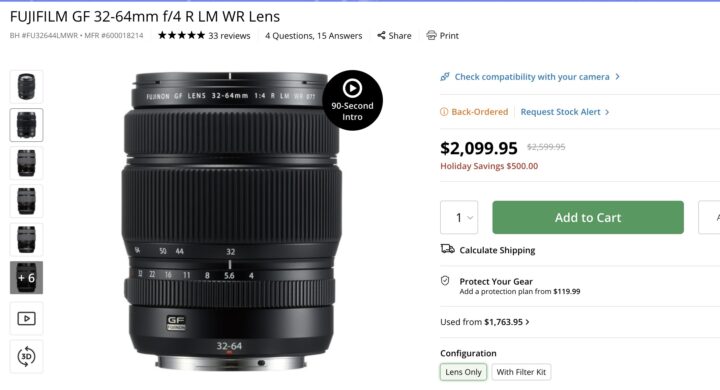
Mattia Campos is shooting top-tier flagship cameras and lenses from all possible brands for sports and wildlife photography for 20 years now.
But for this trip to Patagonia he decided to try something completely new: the Fujifilm APS-C system.
So he got himself a Fujifilm X-H2S and XF500mmF5.6 and started his journey.
He documented his experience in a lengthy and brutally honest article, in which he shares truths that Full-Frame fanboys might not want to hear, along with fair critiques that Fujifilm should take seriously.
Was it a good experience?
In short: he was blown away by the Fujifilm APS-C system.
The best JPEG files and colors he has ever seen on any system (clearly superior even to Canon), ultra-flexible RAW files that did not make him miss his flagship full frame cameras and all this is a compact and affordable package you can only dream of in the Full Frame world.
In fact, he goes so far to say that the Fujifilm APS-C system could become a serious threat for all the high-end full frame competitors… if only one last thing gets fixed: autofocus!
To be clear: the autofocus is really good, but not yet on par with the top tier models from competitors. And he’ll explain what exactly did not work super-well in his article (and we sum up below for you).
I invite you to read the full article (written in Italian) and see all the images at the Italian website/forum juzaphoto.
The Article in Short
Preparing for Patagonia: Why He Chose Fujifilm
While planning his wildlife-focused trip to Patagonia, he spent months debating which gear would best meet his needs. In the end, he chose a setup he had never used before: the Fujifilm X-H2S paired with the XF500mmF5.6. Coming from years of shooting with flagship bodies and high-end lenses, the X-H2S felt like the natural choice within the Fujifilm ecosystem.
The trip included long and demanding hikes, but carrying the Fujifilm combo was never an issue. Its light weight and compact size—especially compared to full-frame flagship alternatives—made travel far easier.
First Impressions
His experience with Fujifilm was, in a word, fun.
He adapted quickly to the new system, though he did spend time learning menus and fine-tuning settings for different situations.
The X-H2S feels solid, handles beautifully, and offers a superb EVF. The XF500mmF5.6 delivers excellent image quality.
After 20 years photographing wildlife and sports with top-tier gear from multiple brands, he came to a surprising conclusion: for advanced and demanding enthusiasts, a high-quality Fujifilm APS-C system is the best pick in terms of overall balance of performance, weight, size, and price.
Why Fujifilm APS-C Makes Sense
With Fujifilm, you can build a truly capable system for less cost, size, and weight than equivalent full-frame kits. In many real-world situations, the image quality difference is not noticeable. Full-frame often means heavier, bulkier, more expensive gear, without a proportional gain in results.
Recently he has moved more toward shooting JPEGs for practical reasons: less time editing and less storage needed. Fujifilm’s color science is probably best on the market, followed by Olympus/OM System.
Image Quality: His Biggest Surprise
Throughout his Patagonia trip, he was genuinely impressed by the image quality.
X-H2S files are true-to-life, natural, neutral, and free of color casts, with exceptional color and detail. High ISO performance exceeded expectations, dynamic range is excellent, and the files are very flexible in post.
He has used many APS-C cameras from other brands, but none match the X-H2S in build quality, image quality, and lens ecosystem.
Compared to the Canon EOS R7, he found the X-H2S clearly superior in JPEGs, RAW files, high ISO, shadow recovery, lens selection, build quality, and EVF performance.
The XF500mmF5.6 is extremely sharp even wide open, with very pleasant bokeh.
Going Deeper into the Fujifilm System
His excellent experience with the X-H2S convinced him to dive deeper into the Fuji system, so he bought an X-S20 with the XF90mmF2. The X-H2S offers better autofocus thanks to its stacked sensor, but the X-S20 is still a remarkably capable little camera. Its joystick and lack of D-Pad annoyed him, but image quality—including dynamic range and ISO—may actually be slightly better.
Both cameras perform very well in difficult lighting while maintaining impeccable color and high detail.
The Weak Point: Autofocus
The only real downside he found is autofocus.
Switching from near to far subjects (or vice versa) can be slow, costing him a few shots every now and then—especially when photographing unpredictable wildlife. Continuous AF feels a bit rigid and less responsive in low light. Subject and eye detection work, but the menu system is unnecessarily complex.
Overall, the AF is actually good, but not at the same level of the top flagship systems he is used to.
If Fujifilm can overhaul autofocus responsiveness in the Fujifilm X-H2S II, it would spell serious trouble for all the competitors.
Why Fujifilm Could Become the First Choice
Given that Fujifilm APS-C gear costs significantly less, weighs significantly less, and still delivers image fantastic image quality, combined with industry-leading JPEGs, the Fujifilm system has all the potential to become a top choice for both amateurs and professionals alike, if they also catch up in terms of autofocus.
X Cameras
X Lenses





